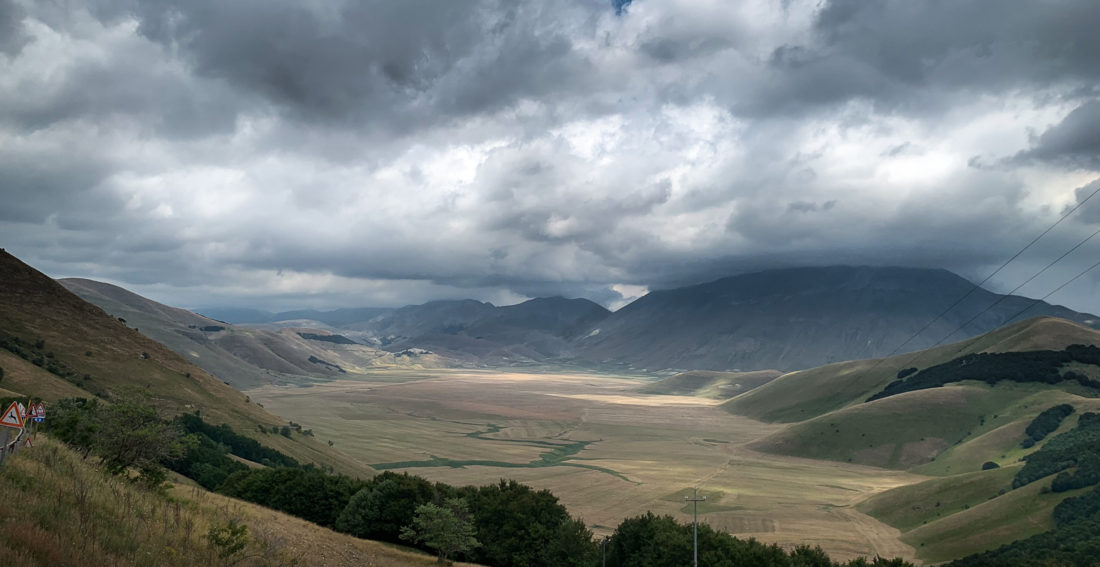
Three years after the earthquakes
I was in need of a little exploration so I decided to head out to see Norcia and Castelluccio, two villages high on Mouni Sibillini hit hard by the Italian earthquakes of August (6.2 magnitude) and October (6.5), 2016.
Norcia is still charming, although the signs of devastation are everywhere. It was part of the Papal States and after a large earthquake in 1859 the church imposed a strict building code that limited housing structures to under three stories, and thanks to that most of the houses survived. The larger buildings, like the 13th-century basilica of St. Benedict, were completely destroyed. The facade is the only thing left standing. The basilica is on top of an earlier structure, and is believed to be where St. Benedict and his twin sister were born in 480. The basilica is in the process of restoration, although when I was there I only saw two men working and a crane lifting a wheelbarrow over the rubble that was the inside of the church.
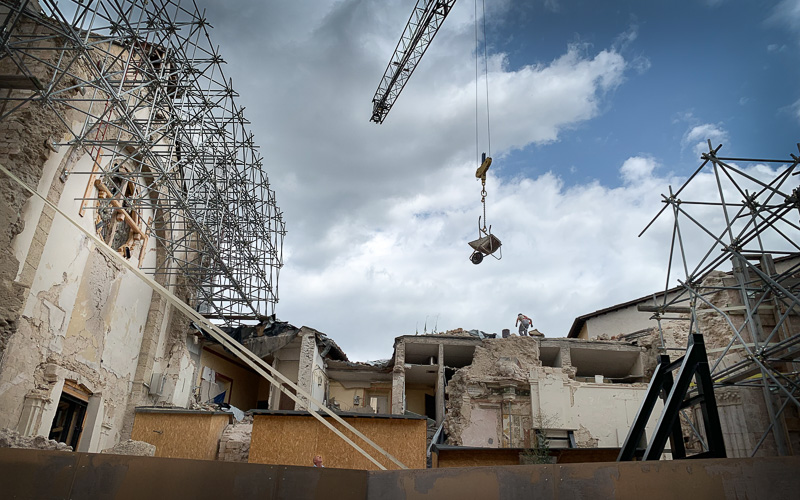
The same side of the church, before the quakes:
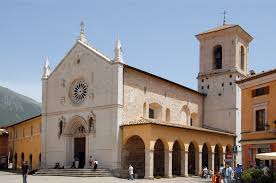
Norcia is also the homeland of the norcini, or traveling butchers, who were in charge of the family spezzatura (cutting up of the pig) that John and I were lucky enough to go to. The area is renowned for its salumi, prosciutto, and other various prepared pig parts.The town still has its share of stores selling norcineria, although many are outside the town gate and in temporary structures.
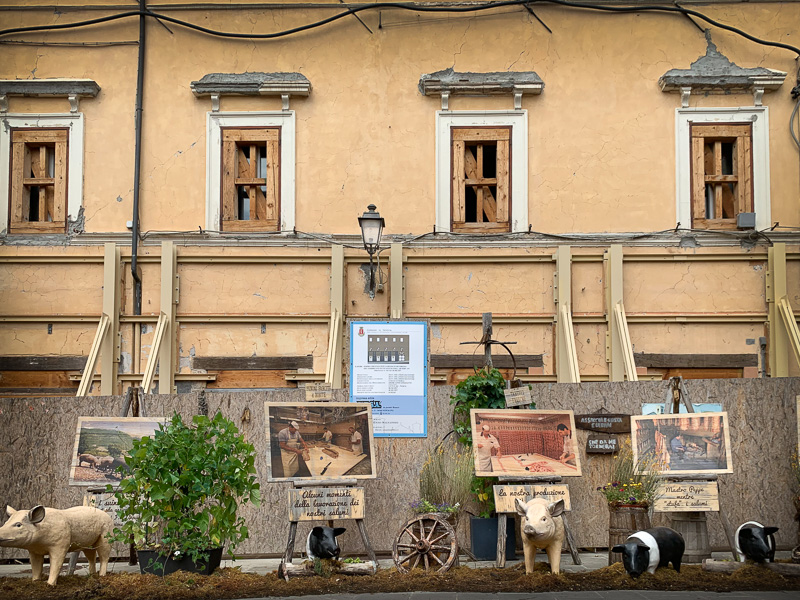
Hanging around town are signs protesting the slowness of aid from the earthquake. This one, in the main square with the ruined church behind, says “Three governments and three commissions, only promises.”
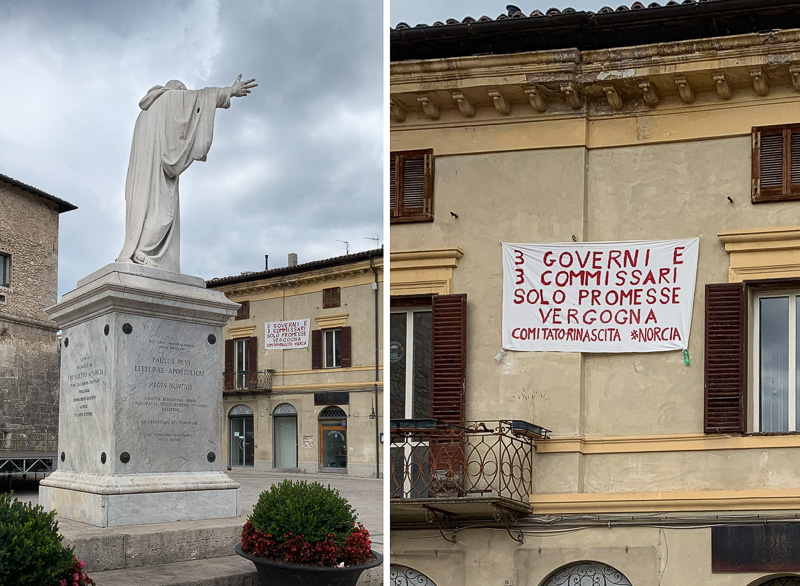
After a coffee in Norcia I drove deeper into the mountains to the tiny village of Castelluccio, home to “nearly” 150 people. Sixty percent of it was leveled in the earthquake, the town was evacuated, and all road access closed off for over a year. The road is open again, as is the village, with a few shops and restaurants largely operating from temporary buildings. Not all villages have recovered as well—on the way I spotted this road leading to other small villages, still closed. The words “infinite shame” are written on the do not enter sign.

The valley that Castelluccio is in is one of the most beautiful, and unusual, places I’ve ever seen. It’s an immense valley, located high in the mountains, with a very flat and wide bottom. There’s only one road running through. If you zoom into the main image above you can see Castelluccio on a small hill to the left of the valley—a glorious site for a town. It’s famous in the spring for flowers blooming on the plain, which I’d just missed, but the hay had just been rolled into bales and the valley was stunning. It is also where some of the most famous lentils in the world come from—as loved by foodies as their more famous cousins the de Puy lentils from France. I hope you can see how beautiful this place is, especially with the hay bales. If you are viewing on a phone. Perhaps zoom in?
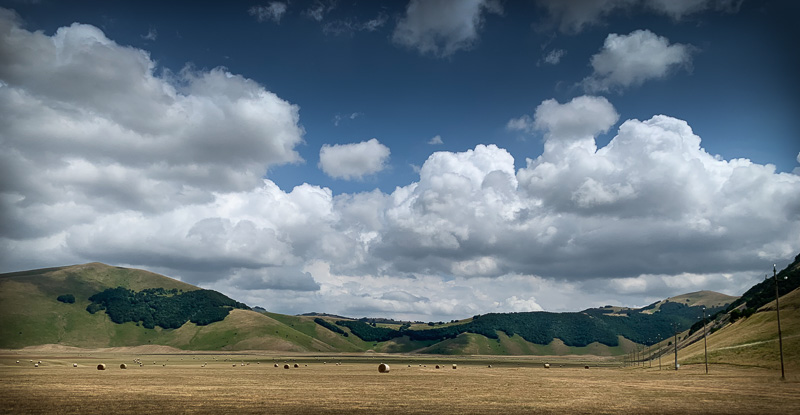
My restaurant radar was thrown off by all the identical temporary buildings, but I followed my nose all the way up the hill to the last restaurant, where all the workmen were headed, always my best clue to local food. I had the best handmade pasta with cinghiale sauce that I’ve had yet in Italy, where sauces with wild boar are common. (You can see some of the destruction to the left of the temporary building.)
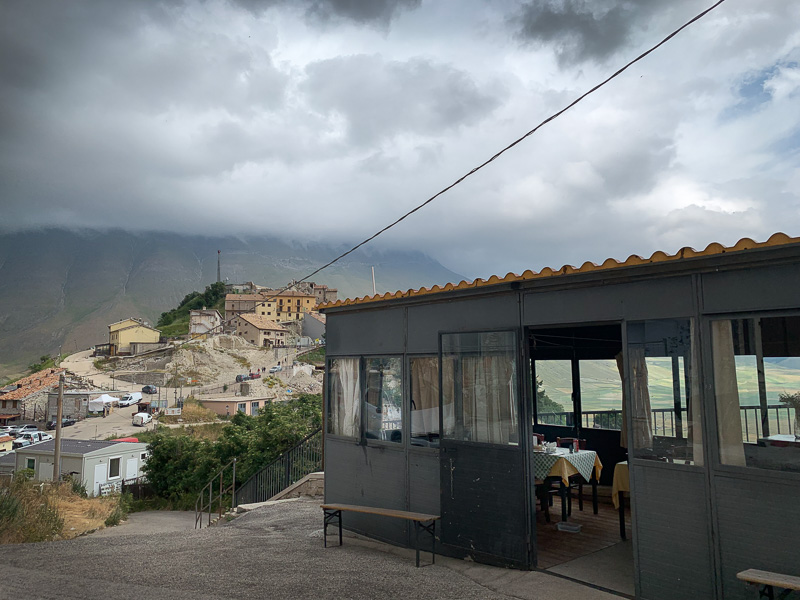
But the best part was that I was seated at a table next to two brown robe-clad monks. The last thing I was expecting was for them to turn out to be American. One is the Prior of the Benedictine Monastery in Norcia. I started a fascinating conversation with them—about why most of the monks in this community are American, what it is like to build a new monastery with such a weight of history to live up to, the earthquake and its aftermath, making beer, and creating the #1 hit album on Billboard’s classical chart. All ahead in the next Itch.
And if you find yourself in Castelluccio, I’d highly recommend the Agriturismo Monte Veletta for lunch.






No Comments